Frequently Asked Questions Related to Neurology
Migraine FAQ's
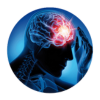 A migraine is a neurological condition that causes intense, throbbing headaches, often accompanied by nausea, vomiting, and sensitivity to light and sound.
A migraine is a neurological condition that causes intense, throbbing headaches, often accompanied by nausea, vomiting, and sensitivity to light and sound.
Migraine triggers vary from person to person but may include:
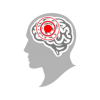 Stress and anxiety
Stress and anxiety Certain foods (processed foods, caffeine, alcohol)
Certain foods (processed foods, caffeine, alcohol) Sleep disturbances
Sleep disturbances Hormonal changes (menstruation, menopause)
Hormonal changes (menstruation, menopause) Weather fluctuations
Weather fluctuations Bright lights and strong odors
Bright lights and strong odors
 Rest in a dark, quiet room
Rest in a dark, quiet room Apply a cold compress on the forehead or neck
Apply a cold compress on the forehead or neck Stay hydrated and avoid dehydration
Stay hydrated and avoid dehydration Reduce stress with relaxation techniques
Reduce stress with relaxation techniques Avoid excessive caffeine and alcohol
Avoid excessive caffeine and alcohol Take prescribed medication as advised by your doctor
Take prescribed medication as advised by your doctor
 Excessive screen time without breaks
Excessive screen time without breaks Skipping meals or irregular eating habits
Skipping meals or irregular eating habits Loud noises and bright lights
Loud noises and bright lights Overuse of painkillers, which may cause rebound headaches
Overuse of painkillers, which may cause rebound headaches
Seek medical advice if:
 You experience frequent or severe migraines (more than 4 times a month)
You experience frequent or severe migraines (more than 4 times a month) Your migraine is worsening over time
Your migraine is worsening over time You experience vision disturbances, confusion, or numbness
You experience vision disturbances, confusion, or numbness
Lower Back Pain FAQs
Common causes include:
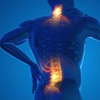 Poor posture and prolonged sitting
Poor posture and prolonged sitting Muscle strain or injury
Muscle strain or injury Lifting heavy objects incorrectly
Lifting heavy objects incorrectly Weak core muscles
Weak core muscles Herniated or bulging disc
Herniated or bulging disc
Common causes include:
 Maintain good posture while sitting and standing
Maintain good posture while sitting and standing Apply heat or ice packs for pain relief
Apply heat or ice packs for pain relief Stretch and strengthen core muscles
Stretch and strengthen core muscles Use a firm mattress for proper spinal support
Use a firm mattress for proper spinal support Stay active with low-impact exercises
Stay active with low-impact exercises
 Prolonged sitting without movement
Prolonged sitting without movement Heavy lifting with improper form
Heavy lifting with improper form Slouching or hunching over
Slouching or hunching over High-impact activities that strain the back
High-impact activities that strain the back
 If back pain lasts more than 4 weeks
If back pain lasts more than 4 weeks If pain spreads to your legs or causes numbness
If pain spreads to your legs or causes numbness If you experience difficulty walking or standing
If you experience difficulty walking or standing
Lumbar Spondylosis FAQs
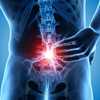 Lumbar spondylosis is a degenerative spine condition caused by wear and tear of the lower back, leading to stiffness and mobility issues.
Lumbar spondylosis is a degenerative spine condition caused by wear and tear of the lower back, leading to stiffness and mobility issues.
 Chronic lower back pain
Chronic lower back pain Morning stiffness in the lower spine
Morning stiffness in the lower spine Numbness or tingling in the legs
Numbness or tingling in the legs Weakness in the lower limbs
Weakness in the lower limbs Difficulty bending or standing for long periods
Difficulty bending or standing for long periods
 Use a lumbar support cushion while sitting
Use a lumbar support cushion while sitting Stay active with low-impact exercises
Stay active with low-impact exercises Apply heat therapy to relieve stiffness
Apply heat therapy to relieve stiffness Maintain a healthy weight to reduce strain on the spine
Maintain a healthy weight to reduce strain on the spine Follow prescribed medications for pain relief
Follow prescribed medications for pain relief
 Sitting for long periods without movement
Sitting for long periods without movement High-impact activities like running and jumping
High-impact activities like running and jumping Lifting heavy objects incorrectly
Lifting heavy objects incorrectly Ignoring symptoms—early diagnosis is key
Ignoring symptoms—early diagnosis is key
 If back pain persists beyond 6 weeks
If back pain persists beyond 6 weeks If you experience numbness or weakness in the legs
If you experience numbness or weakness in the legs If you have difficulty walking or balancing
If you have difficulty walking or balancing
Neck Pain FAQs
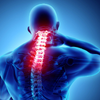 Poor posture, especially when using screens
Poor posture, especially when using screens Sleeping in an incorrect position
Sleeping in an incorrect position Muscle strain due to stress
Muscle strain due to stress Whiplash or sudden jerking movements
Whiplash or sudden jerking movements Cervical spine degeneration
Cervical spine degeneration
 Maintain a good posture while sitting and working
Maintain a good posture while sitting and working Apply ice or heat therapy for pain relief
Apply ice or heat therapy for pain relief Perform gentle neck stretches and rotations
Perform gentle neck stretches and rotations Use an ergonomic pillow for neck support
Use an ergonomic pillow for neck support Massage the neck gently to relieve tension
Massage the neck gently to relieve tension
 Looking down at phones for long periods
Looking down at phones for long periods Sleeping on your stomach
Sleeping on your stomach Carrying heavy bags on one shoulder
Carrying heavy bags on one shoulder Sudden jerking or twisting movements
Sudden jerking or twisting movements
 If pain persists beyond 3 weeks
If pain persists beyond 3 weeks If you experience tingling, numbness, or weakness in arms
If you experience tingling, numbness, or weakness in arms If neck pain follows an injury or accident
If neck pain follows an injury or accident
Cervical Spondylosis FAQs
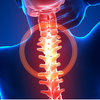 Cervical spondylosis is a condition caused by degeneration of spinal discs and bones in the neck, leading to stiffness, pain, and nerve compression.
Cervical spondylosis is a condition caused by degeneration of spinal discs and bones in the neck, leading to stiffness, pain, and nerve compression.
 Persistent neck pain and stiffness
Persistent neck pain and stiffness  Headaches originating from the neck
Headaches originating from the neck  Tingling or numbness in arms and hands
Tingling or numbness in arms and hands  Dizziness and loss of balance
Dizziness and loss of balance  Muscle weakness in shoulders or arms
Muscle weakness in shoulders or arms
 Maintain a straight posture while working
Maintain a straight posture while working  Perform gentle neck stretches regularly
Perform gentle neck stretches regularly  Apply warm compresses for muscle relaxation
Apply warm compresses for muscle relaxation  Use a firm pillow to support the neck
Use a firm pillow to support the neck  Stay physically active to strengthen neck muscles
Stay physically active to strengthen neck muscles
 Excessive screen time without proper posture
Excessive screen time without proper posture Lifting heavy objects that strain the neck
Lifting heavy objects that strain the neck Sudden jerks or twisting movements
Sudden jerks or twisting movements Ignoring prolonged pain—seek medical help
Ignoring prolonged pain—seek medical help
 If neck pain spreads to arms or hands
If neck pain spreads to arms or hands If you experience difficulty in gripping or weakness in hands
If you experience difficulty in gripping or weakness in hands If symptoms worsen despite home care
If symptoms worsen despite home care If dizziness and balance issues occur
If dizziness and balance issues occur
